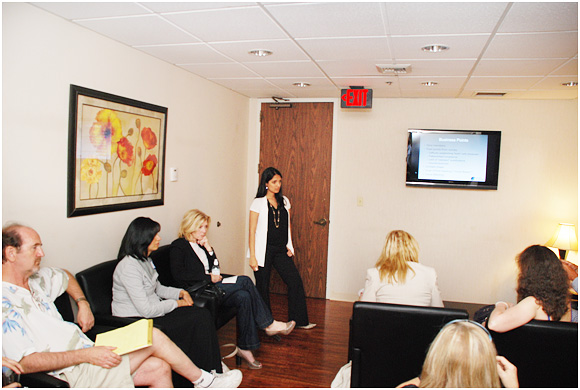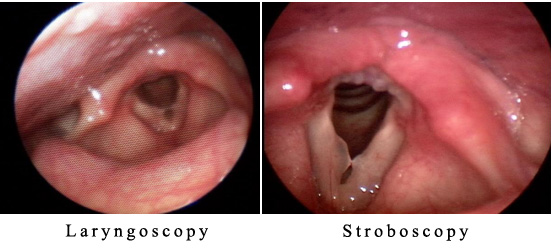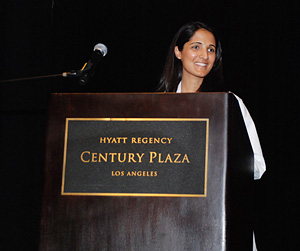- Question: How do the ingredients in e-cigarettes and vaporizers affect respiratory health? - August 16, 2019
- Bad Technique and Vocal Injury - January 9, 2019
- Is Edible Marijuana Dangerous for the Voice? Myths Dispelled - December 18, 2018
- Surprise! You have a hemorrhage - January 31, 2018
- Graves’ Disease: Treatment Overview - September 25, 2017
- Adele and the Stigma of Vocal Injury - July 11, 2017
- Vocal Curbside Consult: How does the thyroid affect the voice? - May 16, 2017
- Vocal Curbside Consult: How do hormones affect the voice? - May 3, 2017
- Vocal Curbside Consult: How do emotion and stress affect the voice? - April 17, 2017
- Vocal Curbside Consult: Vocal Recovery After Illness - April 7, 2017
This is the fourth chapter of a series of helpful information geared towards professional voice users, presented by Otolaryngologist Dr. Reena Gupta, Director of the Voice and Swallowing Division of the Osborne Head & Neck Institute.
Tip # 4:
The “scope in your nose” is not a voice exam.
You are a voice user; you need and deserve stroboscopy.
The Los Angeles Voice Club had its second meeting and it was a resounding success. The club members enjoyed the chance to meet each other again and, even more, they enjoyed the free exchange of knowledge and information.
Renowned vocal coach, Lisa Popeil, shared her basic tips for how to teach students about powerful voice use. The other coaches in attendance loved the opportunity to ask her questions. It was a great chance for teachers to learn Lisa’s methods to see if they could use it in their studios as well.
Dr. Reena Gupta, laryngologist at Osborne Head and Neck Institute and founder of the LA Voice Club, then shared some cases from her practice. The group was amazed by what they learned about how Dr. Gupta assesses her patients.

One case stood out in particular, of a very rare infection of the throat. The patient had suffered with hoarseness and a sore throat for months, having been treated by several doctors with antibiotics without any improvement. The problem is that when patients see otolaryngologists (ear, nose, and throat doctors) with throat problems, they usually have a laryngoscopy, which is a small camera that is passed through the nose. This gives a nice overview of the throat but does not always give you enough detail to properly diagnose and treat a patient.
Dr. Gupta always follows a laryngoscopy with a stroboscopy, which is the latest technology in voice care. This larger camera is delicately placed in the mouth giving a brighter, high-resolution image of the throat in action. Amazingly, it uses strobe light to slow down the vibrations of the vocal folds so that even small problems can be detected!
What is the difference between laryngoscopy and stroboscopy?
Laryngoscopy……………. ………………… Stroboscopy
- Low resolution • High resolution
- Low magnification • High magnification
- Dark • Bright
- Through the nose (can be painful) • Through the mouth (painless)
- General overview of throat • Detailed exam of how voice works
- Can’t see vocal fold vibration • Can see vocal fold vibration
- Available in most ENT offices • Only available in voice specialist’s office
This sophisticated exam allowed Dr. Gupta to see that this particular infection went deeper. Seeing this allowed her to come to the correct diagnosis. The patient is now symptom-free and back to her normal voice. This technology is not available in most physicians’ offices because it is expensive and most otolaryngologists do not know how to use it. But it is critical in cases of voice problems to have a stroboscopy to accurately diagnose and treat your voice problem.

Laryngoscopy gives the impression of something on the vocal folds (bumps) but the true nature can’t be seen. Stroboscopy shows a clear cyst on the vocal fold, guiding treatment in a way that the blurry image on the left cannot.
A message from Dr. Reena Gupta, laryngologist at OHNI’s Division of Voice
I have seen many cases where performers think they have had a voice exam because they have had a laryngoscopy (“scope” passed through the nose). I can’t stress enough that this is not enough for a voice user. If you rely on your voice for a living, you need to see a detailed picture of how your voice is working. This means stroboscopy. An athlete would no more settle for an x-ray instead of an MRI than you should settle for a laryngoscopy.
The only way to have your voice properly assessed is with stroboscopy.
If you have never had the following:
- A microphone around your neck
- A larger, rigid (stiff) camera passed in your mouth
- Your tongue held during the exam
- A playback of a slow-motion picture of your throat, where you see vocal fold vibrations
… you have not had a voice exam. Do not settle for less. This video is an example of a stroboscopy:
If you would like to speak with one of our ENT specialists about ear, nose, or throat problems and treatment options, we at OHNI will be happy to schedule an appointment or phone consultation with you.
To learn more about Dr. Reena Gupta and voice care, visit: http://www.voicedoctorla.com/



